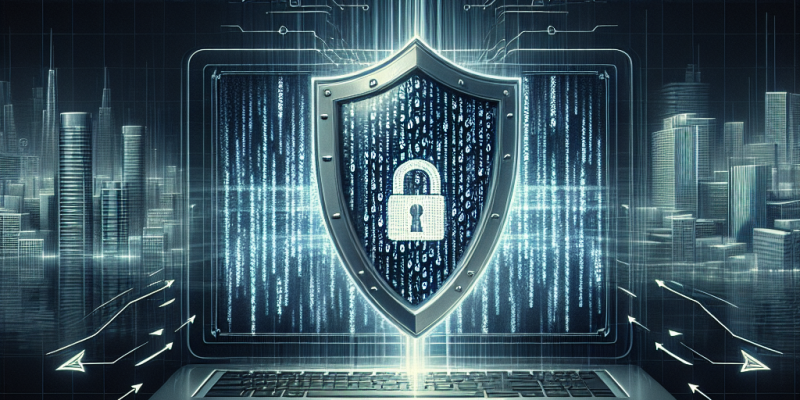Ransomware Resurgence: Strategies to Protect Your Business in 2024

Ransomware Resurgence: Strategies to Protect Your Business in 2024
The ransomware attack landscape has evolved dramatically in recent years, with cybercriminals employing increasingly sophisticated tactics that target organizations of all sizes and sectors. As we step into 2024, the resurgence of ransomware poses a formidable threat to businesses around the globe. This article delves into the state of ransomware today and offers essential strategies to help mitigate risks and enhance your business’s cyber resilience.
Understanding the Ransomware Threat
Ransomware is malicious software that encrypts an organization’s data, making it inaccessible until a ransom is paid, often in cryptocurrency. The resurgence of these attacks can be attributed to several factors:
-
Increased Sophistication: Attackers are now using advanced techniques like double extortion, where they not only encrypt data but also threaten to release sensitive information if the ransom isn’t paid.
-
Ransomware-as-a-Service (RaaS): The dark web has made it easier for novice cybercriminals to launch attacks by offering ransomware kits for purchase or lease, enabling widespread threats.
-
Targeting Supply Chains: Cybercriminals are increasingly targeting third-party vendors to breach larger organizations, exploiting the interconnected nature of modern businesses.
- Remote Work Vulnerabilities: The shift to remote work has expanded the attack surface, providing more opportunities for cybercriminals to exploit insecure home networks and personal devices.
Strategies for Businesses to Combat Ransomware
To safeguard against the growing threat of ransomware, businesses need to adopt a multi-faceted approach. Below are key strategies to enhance your organization’s defenses:
-
Implement Robust Backup Solutions:
- Regular Backups: Ensure that data is backed up regularly and that backups are stored securely offsite or in the cloud. Employ a 3-2-1 strategy—three total copies of data, two local but on different devices, and one offsite.
- Test Restoration: Regularly test backup restoration processes to ensure that data can be recovered quickly in the event of an attack.
-
Adopt a Zero Trust Security Model:
- Least Privilege Access: Limit user access to only those resources necessary for their role. Implement strict authentication measures.
- Network Segmentation: Divide the network into segments to contain attacks and prevent lateral movement by attackers.
-
Training and Awareness Programs:
- Employee Education: Conduct regular training sessions on cybersecurity awareness, phishing detection, and safe online practices. Employees are often the first line of defense.
- Simulated Phishing Attacks: Use simulated phishing attacks to evaluate employee responsiveness and reinforce training.
-
Regular Software Updates and Patch Management:
- Automate Updates: Ensure that operating systems, applications, and antivirus software are regularly updated to protect against known vulnerabilities.
- Vulnerability Management: Conduct regular assessments and penetration testing to identify weaknesses in your systems.
-
Implement Advanced Threat Detection and Response:
- Intrusion Detection Systems (IDS): Utilize IDS to monitor network traffic for suspicious activity and potential threats in real time.
- Security Information and Event Management (SIEM): Leverage SIEM solutions for aggregated log analysis, which helps in identifying and responding to threats faster.
-
Develop an Incident Response Plan:
- Preparation for Ransomware Events: Have a clear incident response plan in place that outlines roles, responsibilities, and processes in the event of an attack.
- Communication Strategy: Prepare a communication plan to notify stakeholders, clients, and regulatory authorities in accordance with legal obligations.
- Collaborate with Cybersecurity Experts:
- Third-Party Partnerships: Engage with cybersecurity firms that specialize in threat intelligence and incident response to strengthen your defense strategy.
- Cyber Insurance: Consider investing in cyber insurance to mitigate financial loss and aid recovery in the event of a ransomware attack.
The Path Forward
In 2024, the ransomware landscape is poised for further evolution as cybercriminals refine their tactics and targets. By proactively implementing these strategies and fostering a culture of cybersecurity awareness, businesses can bolster their defenses against ransomware threats. The journey to cybersecurity resilience is ongoing, requiring vigilance, adaptation, and a commitment to staying ahead of emerging risks.
As ransomware continues to pose a serious threat to organizations worldwide, taking decisive action now is critical not just to protect your business but also to secure the trust of customers and partners in an increasingly digital world.














